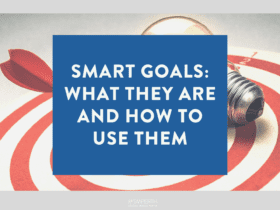Do you know what people are saying about you when you’re not in the room?
If you said no or you’re not sure then pay attention and learn how to apply social listening to your marketing strategy.
(Most) brands are really good at putting out a lot of noise. They promote themselves and their products and services but not a lot of them take the time to listen to the needs and desires of their customers.
Following on from our previous article around why you should be using social listening we now take a more in depth look at what it is and how you should approach it and apply it to your strategy.
What is social listening?
Social media listening involves the monitoring of what is being said on social media about a brand, but different from ‘social media monitoring’ it also involves acting on the information. This simply means using the information gathered to inform social media strategy and social campaigns.
An important part of social listening is learning the sentiment around a brand or topic, this is known as social sentiment. Social sentiment is a far more insightful method of measuring content than the engagement rates of posts that social monitoring focuses on.
Analysing the sentiment towards a social media post can inform brands on what content is received positively as versus what is negatively received. This can be applied to the overall marketing strategy of a brand, informing what content should be amplified and any changes in direction the brand should consider.
Why you should listen.
Talk talk talk. Sell sell sell. Me me me. Blah blah blah…
Stop and pause for a moment. Do you hear anything? Someone mentioned your brand over on Twitter, you missed it and now you’re getting a bad rap for not responding.
Listening to what is being said about your brand and being a part of conversations allows you to have better control over your reputation. Social business pages are also great platforms for providing customer service, chances are your customers will be au fait with the concept too. What’s more, you can learn about consumers pain points, find content ideas, see what your competitors are doing and discover your unique selling point.
But the bigger picture is all these insights and snippets of knowledge gained from listening to conversations can be used to inform your marketing strategy and improve your campaigns.
How to listen
First, you need to work out what you are wanting to achieve through listening. Are you looking to spy on your competitors? Do you want feedback on a new product? Do you hope to broaden your audience?
Next, determine what to listen for in the conversations. What you listen for will evolve and grow but to start with include the basics such as: your brand name and social handles; your industry; your competitors; your products/services and those of your competitors; industry jargon and associated keywords.
Listening tools such as HootSuite, TweetReach, SproutSocial, BuzzSumo and even Google Alerts are a really good way to monitor what is being said. Do your research and find the one that is right for you and what you are hoping to achieve.
Set up your listening tool with all of the relevant social platforms your brands has a profile on but also extend the reach to include other places where sentiment may be expressed around your industry or services your provide. For example, a typically white collar platform such as LinkedIn may not seem an obvious place to listen for a plumbing business but listening in this space could provide insights of a different nature.
Listen and learn
You’ve listened for a while and have the data, now comes time to apply the insights. Build what you’ve learned about your customers and potential customers into your strategy. Create content that is going to appeal to them and deliver it to them at the right time. Continue to listen and learn, and put the knowledge you gain into action.









LET’S CONNECT